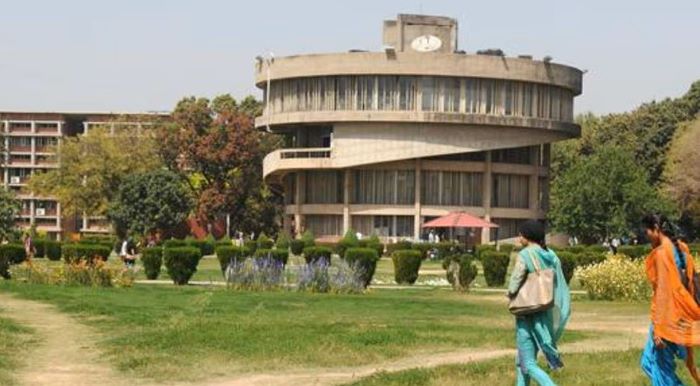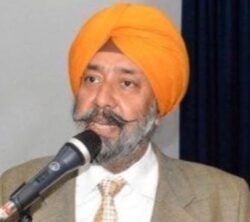 While we stand shoulder to shoulder with the students and former students of Panjab University, Chandigarh in opposing the recent Central Government notification that rewired its Senate and Syndicate, it is equally important to step back and ask a harder question: what do our own state universities look like on paper?
While we stand shoulder to shoulder with the students and former students of Panjab University, Chandigarh in opposing the recent Central Government notification that rewired its Senate and Syndicate, it is equally important to step back and ask a harder question: what do our own state universities look like on paper?
If we believe the old PU model is normatively superior, intellectual honesty demands that we try to replicate it in Punjabi University, Patiala, Guru Nanak Dev University, Amritsar, and Punjab Technical University—not just defend it at one historic campus.
1. What made Panjab University distinct?
Under the Panjab University Act, 1947, the university was governed by a Senate (the supreme authority) and a Syndicate (its principal executive body).
Key features that once made PU unusual in India included:
A large Senate with ex-officio, nominated and, importantly, elected Ordinary Fellows.
A graduate constituency, where registered graduates across several states elected their own representatives to the Senate.
A Syndicate largely elected by the Senate, ensuring the university’s executive body was answerable to a broad, representative general body.
This made PU a rare public university where graduates, teachers, and principals of affiliated colleges had a meaningful electoral voice.
The recent notification attempted to reshape this by downsizing the Senate, abolishing the graduate vote, and converting the Syndicate into a more nominated body.

We can—and should—stand with PU’s students and alumni in resisting any attempt to erase this democratic tradition by executive shortcut. But once the dust settles, we must also ask: how do our other state universities compare?
2. Punjabi University, Patiala: A Senate of nominations and rotations
The Punjabi University Act, 1961, does create a Senate and a Syndicate, but they function very differently from PU’s historic model.
Senate
The Senate consists mainly of:
Ex-officio members such as the Governor-Chancellor, Chief Minister, Chief Justice of the High Court, Education Minister, Education Secretary, and senior university officers.
Ordinary Fellows chosen largely by:
Rotation among Deans, Heads of Departments, and Principals.
Nominations by the Chancellor on the advice of the State Government.
A few members from the Legislative Assembly, donors, teachers, and other categories.
There is no graduate constituency, and no direct electoral representation of the sort PU had.
Syndicate
The Syndicate includes:
Ex-officio officials and senior administrators.
Members chosen by rotation from Deans, HoDs, and Principals.
Three nominated by the State Government.
Three indirectly elected by the Senate from among its own members.
Here too, nomination and rotation dominate; electoral accountability barely exists.
3. Guru Nanak Dev University, Amritsar: Nearly the same architecture
The Guru Nanak Dev University Act, 1969, mirrors Punjabi University in structure.
Senate
It includes:
Ex-officio members: Governor-Chancellor, Chief Minister, Chief Justice, Education Minister, Education Secretary, Advocate-General, and senior academic administrators.
Ordinary Fellows drawn mostly from Deans, HoDs, Principals, teachers, donors, and a large number of State Government nominees.
Again, there is no graduate vote, no direct electoral constituency, and very limited internal elections.
Syndicate
The GNDU Syndicate also consists of:
Ex-officio administrators and senior university officials.
Members drawn by rotation from the Senate.
Three nominated by the Government.
Three indirectly elected by the Senate.
The pattern repeats: heavy nomination, minimal election, maximum official presence.
4. PTU (IKG Punjab Technical University): No Senate at all
The IKG-PTU Act, 1996, diverges even further.
The university has no Senate–Syndicate pair.
The apex body is a Board of Governors, dominated by:
Senior civil servants, including the Chief Secretary as Chair (after amendment, replacing the Technical Education Minister).
The Vice-Chancellor and key administrators.
Members appointed by the State Government and Chancellor.
It is, by design, an appointment-driven governance structure.
5. The honest conclusion: if PU is the ideal, replicate it
Once these statutes are examined side by side, certain truths become unavoidable:
Panjab University’s traditional model—with its elected Senate and semi-elective Syndicate—was far more democratic and participatory than any other state university in Punjab.
Punjabi University, Patiala, and GNDU, Amritsar rely on structures that are largely nomination-based, rotation-based, and dominated by ex-officio officials.
PTU dispenses with representative bodies altogether, using a purely appointed Board of Governors.
Therefore:
It is perfectly consistent to oppose the Central Government’s attempt to dilute PU’s representative character.
But if we truly believe that PU’s historic model is the gold standard, then we must also ask why Punjab has not adopted that same model for Punjabi University, GNDU, and PTU.
If we celebrate PU’s democratic structure as exemplary, then the real test of sincerity is simple:
Are we prepared to democratise our other state universities on the same lines, or are we only sentimental about one campus in Chandigarh?
Share The KBS Chronicle
Panjab University’s Governance Storm: Fix the Fundamentals, Not Just the Optics
KBS Sidhu
·
Nov 10
Panjab University’s Governance Storm: Fix the Fundamentals, Not Just the Optics
The furore over the Senate and Syndicate at Panjab University (PU) has galvanised students and alumni alike. But if this energy is to count, the campaign must move from symbolism to substance—anchored in the university’s legal DNA, decision-making structure, funding realities, and academic outcomes.